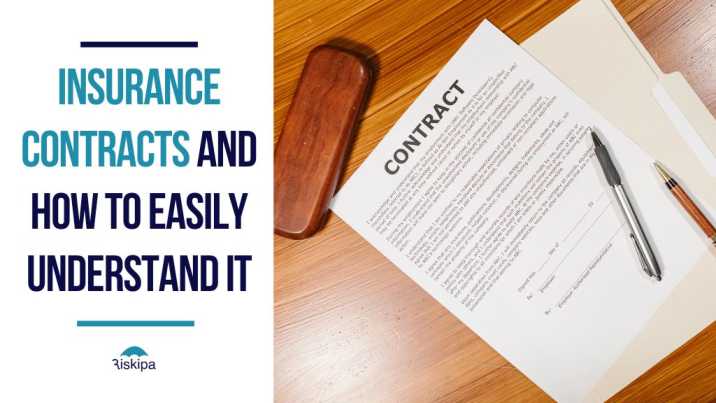
Home Insurance Claim Adjuster Tactics
Homeowners insurance is a form of property insurance that covers losses and damages to an individual’s home or residence – including the properties and other assets in the home.
It can be tricky trying to understand the different terms, conditions, and coverage limits that are in your home insurance paperwork, especially as a layman. Although, you are certain that with your home insurance cover, a specific compensation will be given to you in the event of a loss or damage in/to your home. Right!
How Home Insurance Works
Let’s say for instance water damage has occurred in a home.
A claim will be made to the insurance company for water damage that has occurred in the home. Then, the cost to replace the damages caused by this incident will be estimated by a claims adjuster. And if the claim is approved, the homeowner or insured is informed of the amount of their deductible (according to the policy agreement entered). Thereafter, the insurance company will issue a payment of the excess cost.
But in some cases, it’s not that simple.
Most people who get into a home accident are likely not aware of the predatory nature of some insurance companies, or the fact that there’s a high risk of claims adjusters taking advantage of their situation.
Sometimes after an accident, the insured has the often-frustrating discomfort of dealing with the insurance company. And unfortunately, many insured individuals have no idea about the insurance claim adjuster’s tactics used to avoid compensating victims for the loss they suffer.
Hence, we want you to be aware of the home Insurance claim adjuster’s tactics. Familiarizing yourself with home insurance claim adjuster tactics is a good step to be in check.
To be clearer, let’s understand who a claim adjuster is and the types of claim adjusters.
Who Is a Claim Adjuster
A claims adjuster is an insurance professional who analyzes the extent of an insurance company’s liability in other to determine a fair amount for a settlement. They can handle any kind of claim, including – home accidents, property damage, personal injury, fire accident, etc. The job of an adjuster is to look at the damages or loss of an insured subject matter and determine how much the insurance company should compensate the claimant. This can often be a huge and thorough workload as it can require the adjuster to talk to witnesses, collect police reports, and gather documentary evidence from doctors and other experts.
When you file a homeowner claim, your insurance company will send their insurance adjuster to your house to inspect your loss and damages. The goal of the adjuster is to evaluate your claim and decide how much money the insurance company is required to pay to you.
It’s important to note that the home insurance adjuster is a paid employee or independent contractor of your insurance company. Like any good employee, the adjuster aims to protect the insurance company’s bottom line (profit). From a financial standpoint, insurance companies want to pay the least amount of money they’re legally obligated to pay.
Types of Claims Adjusters
There are three different types/roles of a claim adjuster’s job. There are the company adjuster, the independent adjuster, and the public adjuster.
1. Company Adjuster/Staff Adjuster
This type of claim adjuster works for an insurance company as a full-time employee. When a property has been damaged, it is the job of the company adjuster to prepare claims on the damaged property on behalf of the company that insures that property. A company adjuster will be required to look at the structural claims. These people are full-time employees of an insurance company and are usually paid an annual salary.
2. Independent Adjuster
Independent adjusters work for independent adjusting firms and are hired by insurance companies on a contract basis. Insurance companies hire independent adjusters to help them process claims more efficiently. These adjusters are only allowed to work full-time for insurance companies. An independent adjuster is somewhat like a staff adjuster, the only difference is that they do not work directly for a single insurance agency. Instead, they look for claims adjuster jobs and work independently for various companies. To do this, they must register with Independent Adjusting Agencies.
3. Public Adjusters
Public adjusters work as freelancers or for public adjusting firms and are hired mostly by the claimant on a contract basis. However, the terms “private adjuster” and “independent adjuster” are both sometimes used to refer to public adjusters. Their primary role is to act as an advocate that works on behalf of the claimant. Their job is to negotiate with the insurance carrier. If a customer believes they did not receive a fair rate on their claim, they can use the services of a public adjuster to get a second opinion.
Homeowner Insurance Claims Process
This section goes over when, how, and where you can file your claim. You will find out how you can make your property damage insurance claims process seamless, straightforward, and, above all, successful.
Read More: Property Damage Insurance Claim Process in the UK
When to File a Property Damage Insurance Claim
Generally, the property damage claim time limit ranges from 6 to 12 months (depending on your insurer’s policies). Failing to act within this timeframe is part of the reasons home insurance claims are denied. Therefore, you should contact your insurer right after the disaster takes place to ask them about the home damage claim process and the supporting documents that you need to present.
How to File a Personal Property Damage Insurance Claim
Step 1: Identify the Damage
Start by identifying the damaged items and materials, such as furniture, walls, personal items, and ceilings. Then, write them out on a piece of paper and take pictures so that you can provide your insurance company with proof of the damages. Also, make sure to focus on items that were harmed by the specific incident. Otherwise, you may have your entire claim rejected.
Step 2: Report to Your Insurance Company
Let a home insurance agent or company representative know about the damages as soon as possible. They will let you know what their property damage insurance claims process looks like and which areas are covered by your policy. Your agent might also schedule an appointment with the company’s adjuster.
Step 3: File a Police Report
This step is important if your property was damaged because of a crime (e.g., theft and burglary). In this instance, your insurance company will require you to provide a police report with your claim.
Step 4: File the Property Insurance Claim
After you find out what to include in your claim and get a police report (if needed), you can formally file your property damage claim. Nonetheless, there are two things that you can do to make this step as simple as possible. First, before submitting your claim, go over your forms, documents, and proof of damages with an agent to confirm that all your information is accurate, complete, and properly filed. Second, as mentioned earlier, initiate this process as early as possible to ensure that you submit your paperwork within the claim time limit.
Step 5: Work with the Insurance Adjuster
You must get ready to work with the insurance adjuster. Write a list of the damages that you suffered and be sure that is as clear and transparent as possible Also, be prepared to highlight them as you walk through it with the adjuster. This is because adjusters are well-trained in identifying whether a loss was caused by a specific incident (such as a fire). Providing false information can lengthen your home insurance claims process, lead to claim rejection, or get you in legal trouble.
Step 6: Get Your Property Repaired/Replaced
Next, the company adjuster will estimate how much your claim will be worth and tell you if the insurance company will send you the funds or directly pay the contractors. After that, you can hire a contractor to work on the repairs. But if you experience severe damages that prevent you from living on the property, you may have to do the repairs before you are compensated.
Step 7: Finalize the Insurance Payout
The last step in the home damage insurance claims process is to collect your reimbursement. If you already paid for the repairs, the insurance provider would reimburse you through a check or a bank transfer. However, some companies might directly pay the contractors.
Now that you know how your home insurance claim works, let’s run over how you can itemize your insurance claim.
How To Itemize for Insurance Claim
- Make a List and Take Photos.
- Stay Organized.
- File Your Claim Immediately.
- Know what your policy does and doesn’t cover.
- File a Police Report, if needed.
- Don’t Rush the Process.
- Make Temporary Repairs.
- Save Those Receipts.
- Get compensation or Evaluate policy detail.
Home Insurance Claim Adjuster Tactics
1. Requesting A Recorded Statement
A common home insurance claim adjuster’s tactic is asking you to make an on-the-record statement right away. They try to highlight the part where you seem at fault or at least partially at fault. Also, they ask leading and strategic questions that get you to say things you shouldn’t say, and then use them to dispute your claim.
2. Gaslighting
If there was a third party, insurance claims adjusters will try to claim that a third party was liable. It’s hard to fight off this kind of questioning if you are uninformed. These third parties are often in a vulnerable state, having just been through a traumatic experience and the added stress of paying future bills on their minds. The claim adjusters do not fail to claim the subrogation right of their client (Insurance company).
3. Giving You a Low-Ball Settlement Offer
Adjusters will undermine the value of your claim and the severity of your damaged properties by offering you a low settlement offer that does not cover the extent of your damage. Adjusters often use delay tactics to stretch out the process and intentionally sit on your patience. The idea is to get you into accepting a less settlement amount.
4. Giving You a False Deadline
Another tactic used by insurance claim adjusters to get you into accepting a lowball settlement offer is by giving you a specific deadline to accept the offer. This is just a false deadline that you do not have to accept. It’s a tactic designed to make you think you must accept an offer before the deadline. However, you are not obligated to accept such an offer.
5. Requesting Unnecessary Documentation
This is a common delay tactic. Although you are not obligated to provide irrelevant information for a property damage claim, adjusters sometimes ask for old documents or other unnecessary documents to delay the resolution of the claim. Then they find a way to use this old document against you. That is why providing documents without the advice of a lawyer first is not advised.
6. Downplaying the Extent of the Damages
This is another tactic that is used. Adjusters will try to convince you that you are exaggerating the damages and invalidate the experience you’ve been through. Claims adjusters take advantage of their perceived authority by questioning precautions that may have saved the damages. But with good knowledge of how they operate, you can stand your ground.
7. Trying to Convince You Not to Seek Legal Advice
If you decide to seek legal advice, an insurance claim adjuster will try to convince you not to do so. They know that once you have an advocate, their tactics won’t work. Attorneys are skilled at combating them.
8. Saying They’re on Your Side
The adjuster representing the insurance company might tell you that they’re trying to help you or acts like they’re your friend. However, their loyalty first and foremost is to their company. This is just a tactic to make you feel comfortable. If they try to convince you not to seek legal representation because they claim they are on your side, do not fall for it.
How To Deal with Home Insurance Claim Adjuster Tactics
- Don’t give an on-record statement. You’re not obligated to give a statement.
- Don’t accept the first settlement offer.
- Stick to your story/narration.
- Don’t provide irrelevant documents.
- Don’t trust their efforts to be in your interest.
- Hire an experienced attorney.
Conclusion
Familiarizing yourself with home insurance claim adjusters’ tactics is a step in the right direction. Do you want to stay informed on your insurance policies? If Yes, Riskipa provides you with the best, relevant, and latest information on insurance. Join our mail list!
Frequently Asked Questions on Home Insurance Claim Adjuster Tactics
- Why do Insurance Adjusters Take So Long?
Usually, you’ll hear from an insurance adjuster within three days of claiming to discuss matters. But the most common reason for an insurer’s delay is the adjuster’s caseload. An adjuster likely has dozens of other claims to handle at a time.
- What is the difference between a public adjuster and an insurance adjuster?
An insurance adjuster is sent by the insurance company and does not work on your behalf. Due to this, the insurance adjuster may not accurately estimate damage and loss to your property. Unfortunately, many policyholders don’t realize this until they file an insurance claim. Insurance companies are in the business of making money, so they will take all measures to ensure that you receive the minimum payout possible. A public adjuster is an expert in insurance claims and will work on your behalf during or even after your claims process. The public adjuster’s job is to ensure that you receive the maximum payout in the most stress-free way. Like an insurance adjuster, a public adjuster carefully examines your insurance policy and estimates the full scope of the damage. However, this is the only similarity between the insurance adjuster and the public adjuster.
 Colors
Colors 








